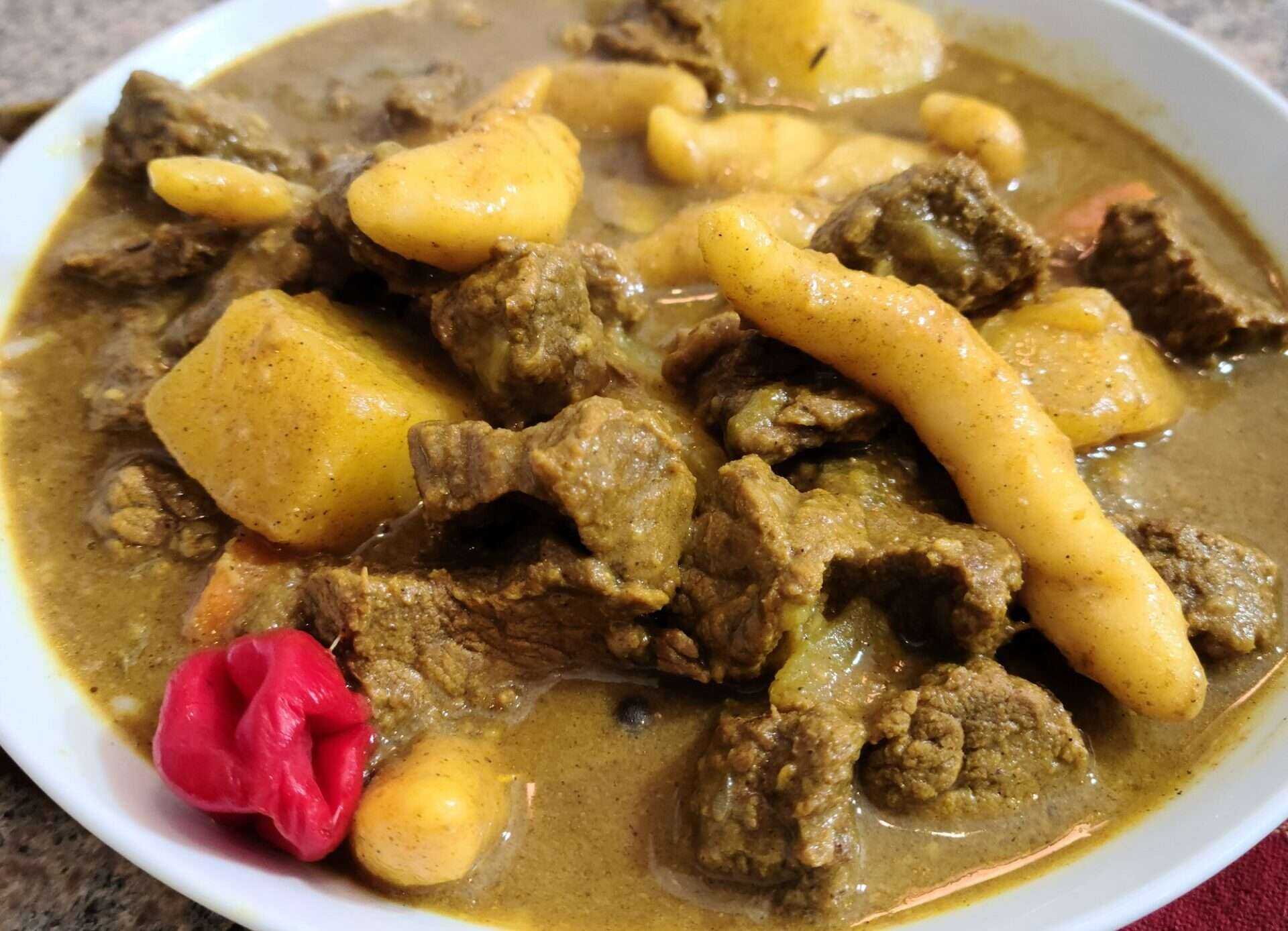BY NOEL CUNNINGHAM
Looking for a warm and spicy mid-week dinner idea? Don’t worry I got you covered with this delicious, curried beef recipe. This chuck of beef smothered in a rich and bold curry coconut sauce loaded with spinners (small dumplings) potatoes, carrots, and spices. I can guarantee you that this curried beef recipe will not disappoint you. Bonus points for tasting even better the next day, too! As an Islander, once you hear curry you think of curry chicken, the popular curried goat or curried seafood, but I was in a beef sort of mood but craving curry at the same time when I decided to make this recipe. This dish comes together nicely in under an hour it is sure to feed a crowd. The key to a good curry is to start off searing your meat on high heat, this step is very important because when you sear meat, you caramelize the natural sugars in the meat and brown the proteins, forming a rich brown crust on the surface of the meat that amplifies the savory flavour of the finished dish. You must use a good brand of curry powder that will give you a good flavour and colour. One of the popular questions I get asked all the time is which curry to use?
Curry favor
As a Jamaican when it comes to curry there is no debate. It must be betapac curry in order for it to be good. Betapac curry is a Jamaican curry that everyone came to love because of its rich bold flavour and spice. This Curry powder is a popular ingredient in Jamaican recipes. Curry powder is a blend of spices that come together to give a warm and robust flavour to whatever dish it is used in. While traditional Indian curry powders are mixed from whole spices as needed for cooking, betapac curry produces absolutely delicious results every time! Ingredients include turmeric, coriander, fenugreek, cumin, pimento, black pepper and cloves. Give this recipe a try and you will thank me later. Keep calm and curry on.
Ingredients
- 2 lbs beef chuck, diced into 1 1/2-inch pieces
- Salt and pepper, to taste
- 3 tbsp curry powder preferably betapac
- 1 small white onion, chopped
- 4 garlic cloves finely chopped
- 1 tbsp ginger peeled, finely chopped or paste
- 2 tbsp vegetable oil
- 2 sprigs thyme
- 2 stalks scallion, chopped
- 6 tbsp pimento berries, smashed
- 1 scotch bonnet pepper, deseeded and chopped
- 1 cup of coconut milk
- 2 potatoes peeled, cut into 2-inch pieces
- 2 carrots, peeled and diced
Spinners
- 1 cup all-purpose flour
- 1/2 teaspoon salt
- Water, as needed, to form a dough
Instructions
Wash beef then season with salt and pepper, curry powder, onion, garlic and ginger then put aside to marinate. Heat oil in a large heavy bottom pot over medium-high heat. Once the pot is heated add beef to the pot and allow to sear before stirring.
Once the meat starts to sear stir occasionally until the meat starts to produce its own liquid. Stir in thyme, scallion, pimento and scotch bonnet and add 2 cups of water and allow to cook.
Meanwhile, to make spinners: In a small bowl, combine the flour and salt. Add just enough water, a little at a time, to make a stiff dough. Let the dough rest for 10 minutes. Pinch off about 1/2 ounce of dough and roll it between the palms of your hands to form a softly tapered cylindrical shape. Repeat until all of the dough has been transformed into spinners.
Reduced meat should start to get tender after 30 minutes. Add coconut milk, spinners, potatoes and carrots, bring to a simmer and cook stirring occasionally, until the beef, potatoes and carrots are tender, 15 to 20 minutes. Thin with water if needed; adjust seasoning if needed. Serve over rice. Enjoy.

